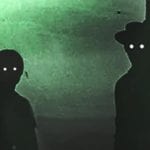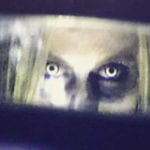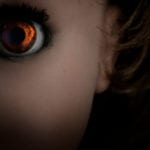 Technology
Technology  Technology
Technology  Humans
Humans 10 Everyday Human Behaviors That Are Actually Survival Instincts
 Animals
Animals 10 Animals That Humiliated and Harmed Historical Leaders
 History
History 10 Most Influential Protests in Modern History
 Creepy
Creepy 10 More Representations of Death from Myth, Legend, and Folktale
 Technology
Technology 10 Scientific Breakthroughs of 2025 That’ll Change Everything
 Our World
Our World 10 Ways Icelandic Culture Makes Other Countries Look Boring
 Misconceptions
Misconceptions 10 Common Misconceptions About the Victorian Era
 Mysteries
Mysteries 10 Strange Unexplained Mysteries of 2025
 Miscellaneous
Miscellaneous 10 of History’s Most Bell-Ringing Finishing Moves
 Technology
Technology Top 10 Everyday Tech Buzzwords That Hide a Darker Past
 Humans
Humans 10 Everyday Human Behaviors That Are Actually Survival Instincts
 Animals
Animals 10 Animals That Humiliated and Harmed Historical Leaders
Who's Behind Listverse?

Jamie Frater
Head Editor
Jamie founded Listverse due to an insatiable desire to share fascinating, obscure, and bizarre facts. He has been a guest speaker on numerous national radio and television stations and is a five time published author.
More About Us History
History 10 Most Influential Protests in Modern History
 Creepy
Creepy 10 More Representations of Death from Myth, Legend, and Folktale
 Technology
Technology 10 Scientific Breakthroughs of 2025 That’ll Change Everything
 Our World
Our World 10 Ways Icelandic Culture Makes Other Countries Look Boring
 Misconceptions
Misconceptions 10 Common Misconceptions About the Victorian Era
 Mysteries
Mysteries 10 Strange Unexplained Mysteries of 2025
 Miscellaneous
Miscellaneous 10 of History’s Most Bell-Ringing Finishing Moves
Top 10 Urban Legends Debunked
We all love urban legends, we all love to hear them, and we all love to spread them. From dead animals, dead people, and the living dead, to animals in fast food, humans have an odd desire to be horrified by these tales. This is a list of 10 of the most famous urban legends that are still doing the rounds but are completely false.
10 Walt Disney’s Body is Cryogenically Frozen
The rumour tells us that Disney, who was well known for being a technical innovator, had his body put into a vat of liquid nitrogen upon his death so that he could be re-animated (har har) when scientists discovered the means. Some versions of the tale even tell us that Walt’s cryo-vat is hidden under the Pirates of the Caribbean attraction in Disneyland!
Sorry to tell you, this is entirely false. On December 15, 1966, Walt Disney died of complications from the treatment he was receiving for lung cancer. Following Disney’s wishes, his family had him cremated (they have since confirmed this fact) and his ashes were interred at the Forest Lawn Memorial Park in Glendale, which you can visit to this day.
Don’t stop here! Read even more tales of the macabre with the Encyclopedia of Urban Legends at Amazon.com!
9 Santa Claus was invented by Coca-cola
In the 1930’s, Coca-cola was looking for ways to spread their burgeoning empire during the winter months – traditionally slow for soft drink sales. They hire Haddon Sundblom, a highly regarded commercial illustrator who proceeded to create a series of images of Santa Claus that associated him with coke. His drawings became a regular annual sight for the coca-cola corporation which helped to spur on the idea that they had conceived the image.
In fact, the red-suited jolly man was already a well established depiction of Santa Claus by the 1920s. The New York Times reported this in 1927: “A standardized Santa Claus appears to New York children. Height, weight, stature are almost exactly standardized, as are the red garments, the hood and the white whiskers. The pack full of toys, ruddy cheeks and nose, bushy eyebrows and a jolly, paunchy effect are also inevitable parts of the requisite make-up.”
8 McDonald’s Shakes are made from reconstituted animal fat
This rumour has been very popular on the internet and I even remember it from my own childhood. The belief was that the liquid poured into the milkshake machine (and the icecream machine) was reconstituted fat – either from pigs or chickens. I even witnessed the filling of one of the machines when I was a teenager and the colour and consistency did seem to give weight to the legend.
However, these days fast food restaurants like McDonald’s are required by law to make the full nutritional information of their products available to consumers. This is the complete list of ingredients in a McDonald’s shake: Whole milk, sucrose, cream, nonfat milk solids, corn syrup solids, mono and diglycerides, guar gum, vanilla flavour, carrageenan, cellulose gum, vitamin A palmitate. Admittedly some of these things sound a little weird, but they are all perfectly safe for human consumption and are not animal by-products. Incidentally, carrageenan is a type of seaweed (also called Irish Moss) – it is used to control freezing agents in the shakes – if it were excluded the milkshake would be a solid block.
7 Snuff films
I am almost certain that this one will cause a stir in the comments! The idea is that films are made (either because very wealthy people will pay for them, or sick people will make their own) in which a person is murdered in the course of filming. This legend probably piggy-backs on other rumours of cannibalism, necrophagia (if you don’t know what this means, don’t look it up – you will regret it), and necrophilia. In recent years it has been helped along by films such as 8mm (starring Nicholas Cage) which treats the subject as if it were fact.
But actually, the fact is, there has not once been a snuff film that has been found. Every time there is a report in the press about one, upon investigation it turns out to be false. There is even a one million dollar reward for anyone that can come up with a commercially sold snuff film. The reward has been on offer for many years now with no one ever stepping forward to claim it.
6 The most Holy religion of Jedi
Some years ago a strange rumour started to pass around the internet – the claim was that if enough people wrote “Jedi” as their religion on a census form, the government would be compelled to include it as an official religion on the next census. This first started with an English census in 2001, followed by an Australian one, and a New Zealand one in the same year.
Not only is it entirely false (as census departments have nothing to do with the wing of Government that could make this happen), but in Australia, and New Zealand, you can be fined $1000 for falsifying your census results. Not only do you risk a fine, but the census information is used to determine allocation of tax funds, so by lying people are doing other members of society a disservice.
5Kentucky Fried Chicken name change
I should first state that I actually believed this urban legend! The legend is that Kentucky Fried Chicken changed its name to KFC because they feared that the word “Fried” had negative connotations that were not good for marketing. (There was another ludicrious legend that surely no one would believe, it claimed that KFC were breeding super chickens to get more meat from them and by law they could not refer to them as Chickens because they were a new race of animal.)
As it turns out, Kentucky Fried Chicken were not concerned about bad publicity at all – in fact, the company has not given a specific reason for the name change. You may be interested to know that the company is now once again beginning to use the original name of Kentucky Fried Chicken.
4 Lemmings occasionally throw themselves from cliffs
This urban legend has quite an awful beginning; in the 1958 Disney documentary White Wilderness, a camera crew forced a group of lemmings off a cliff to document their supposed suicidal behaviour. The film was made in Canada and lemmings were brought in for the film after they were purchased from Eskimo children. The lemmings were filmed in a variety of artificial situations and then herded to a cliff where they were pushed to the edge to simulate a migration.
It is unknown whether Disney was aware of the behaviour of the film crew, but the fact remains, lemmings do not throw themselves from cliffs.
It’s not all princesses and fairy dust! Read more dark Disney stories in Fact or Fiction? 20 Urban Legends, Ghost Stories, Rumors & Secrets of Walt Disney World at Amazon.com!
3The Daddy Longlegs
For quite some time there has been a rumour spreading that the daddy longlegs spider is the most venomous spider but is unable to kill humans simply because its fangs are not strong enough to pierce our skin. In fact, there is a small twist here – it is not possible for us to test the toxicity of the spider because of international codes of ethics and amnesty international (for some bizarre reason).
In reality, the most venomous spiders are the Brown Recluse and the Funnel Web Spider.
2Who invented the toilet?
Contrary to popular belief, it was not Thomas Crapper. Crapper is known to most as an ingenious Victorian plumber who came up with the idea of a flushing lavatory. The majority of this deceit comes from a book written in 1969 by Wallace Reyburn: Flushed with Pride: the Story of Thomas Crapper. This author also, interestingly, wrote The Uplifting Tale of Otto Titzling and the Development of the Bra. Crapper was in fact a plumber, and he did take out a number of plumbing related patents in his time, but none was for the flush toilet.
In reality, Alexander Cummings is generally credited as being the inventor of this illustrious gadget, in 1775 (50 years before Crapper was born). Joseph Bramah and Thomas Twyford improved upon Cummings’ design by adding the ball-cock. Finally, the use of the term crapper for a lavatory is of unknown origin but is believed to have started out in America.
1 Made in USA, Japan
I am sure you have all heard this one: apparently the Japanese renamed a town in Japan to Usa so they could legally exports goods to the US and conceal their original place of origin. This legend was spurred on by the fact that in post-war American, Made in Japan became synonymous with cheap poorly made goods. It is, of course, ludicrous to think that American customs officially would simply shrug off the import of products that are clearly labelled to mislead.
An interesting addition to this tale is that Sony Corporation intentionally made their “Made in Japan” labels small so that American people would not realise that it was a Japanese company. A large number of Sony shipments were turned away by Customs officials because the labels were smaller than regulations required them to be.








